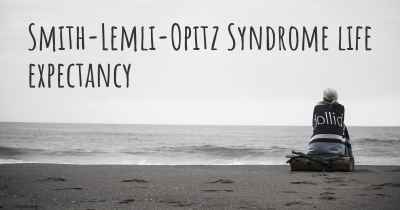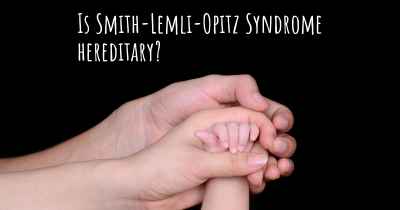Can people with Smith-Lemli-Opitz Syndrome work? What kind of work can they perform?
See how people with experience in Smith-Lemli-Opitz Syndrome give their opinion about whether people with Smith-Lemli-Opitz Syndrome can work and what kind of jobs are more appropriated for people with Smith-Lemli-Opitz Syndrome

Smith-Lemli-Opitz Syndrome (SLOS) is a rare genetic disorder that affects the body's ability to produce cholesterol. It is caused by a mutation in the DHCR7 gene, which leads to a deficiency in the enzyme responsible for converting 7-dehydrocholesterol (7-DHC) to cholesterol. This results in abnormally low levels of cholesterol in the body.
Due to the wide range of symptoms associated with SLOS, the ability of individuals with this syndrome to work can vary greatly. The severity of the condition can range from mild to severe, and the impact on an individual's cognitive and physical abilities can be significant.
Intellectual and developmental disabilities are common in individuals with SLOS. They may experience delays in reaching developmental milestones, have learning difficulties, and exhibit behavioral challenges. These factors can affect their ability to perform certain types of work.
However, it is important to note that each person with SLOS is unique and may have different abilities and limitations. Some individuals with milder forms of the syndrome may be able to work in a variety of settings, while those with more severe symptoms may require more support and accommodations.
Supported employment programs can play a crucial role in helping individuals with SLOS find and maintain employment. These programs provide job training, job placement assistance, and ongoing support to individuals with disabilities, including those with SLOS. The level of support provided can be tailored to the specific needs of the individual, ensuring they have the necessary tools and accommodations to succeed in the workplace.
When considering the types of work that individuals with SLOS can perform, it is important to take into account their individual strengths, interests, and abilities. Some individuals with SLOS may excel in jobs that require attention to detail, such as data entry, quality control, or laboratory work. Others may thrive in roles that involve routine tasks and structured environments, such as assembly line work or inventory management.
Adaptive technology and workplace accommodations can also greatly enhance the ability of individuals with SLOS to perform various types of work. For example, individuals with visual impairments associated with SLOS may benefit from screen magnifiers, text-to-speech software, or other assistive technologies. Flexible work schedules, modified workstations, and additional breaks can also help individuals manage fatigue or sensory sensitivities.
It is important for employers to create an inclusive and supportive work environment for individuals with SLOS. This includes providing appropriate training and education to supervisors and colleagues to increase awareness and understanding of the syndrome. By fostering a culture of acceptance and providing reasonable accommodations, employers can help individuals with SLOS thrive in the workplace.
Ultimately, the ability of individuals with SLOS to work depends on the severity of their symptoms, their individual capabilities, and the availability of appropriate support and accommodations. While some individuals with SLOS may face challenges in finding and maintaining employment, others can lead fulfilling and productive work lives with the right support systems in place.








